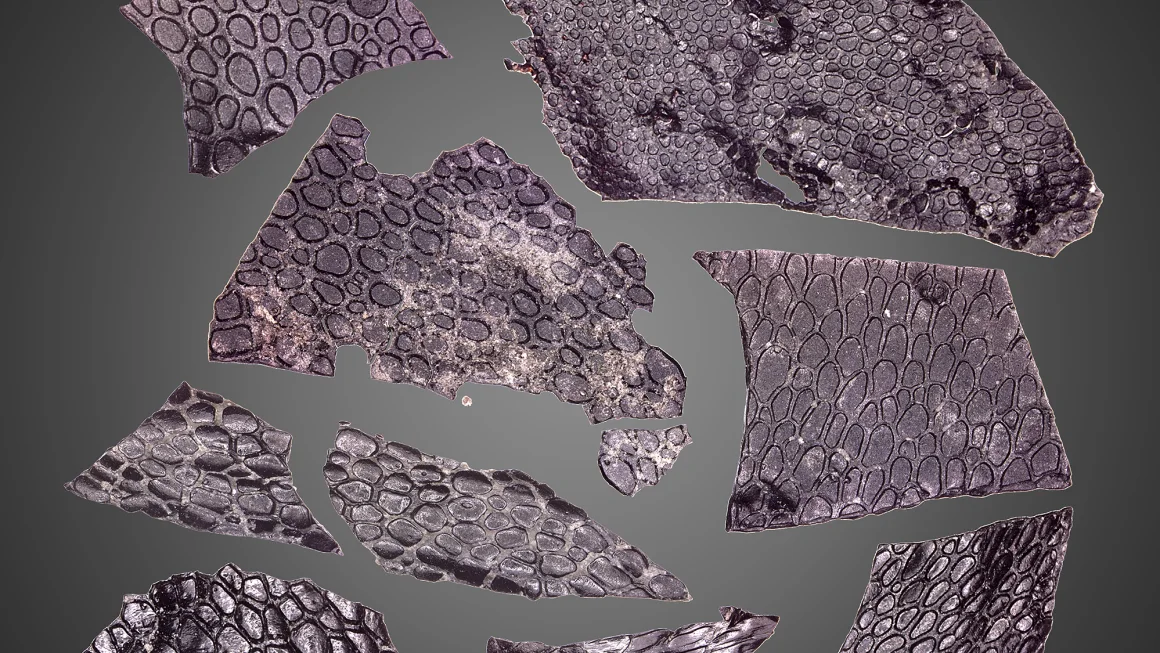Researchers at Toronto University have identified a small, 3D fragment of fossilized skin that’s at least 21 million years older than the previous oldest find. The skin, belonging to a Paleozoic reptile, is the oldest example of a preserved epidermis — the outermost layer of skin in terrestrial reptiles, birds, and mammals.

While skin and soft tissue are rarely fossilized, sometimes nature does us a favor. The newly described skin fossils were found in a cave in Oklahoma known for a rich assembly of fossils. The cave’s lack of oxygen, along with the fine clay sediment and oil seepage found there, helped to preserve the tissue.
The sample is estimated to be 286 to 289 million years old based on stalagmite rings from the limestone cave, predating dinosaurs by nearly 50 million years. The cave, known as Richards Spur, has offered paleontologists other interesting well-preserved fossils from the Paleozoic (541-252 million years ago). Back then, it was filled with tar and petroleum from a nearby shale area, protecting the fossil from significant decay.
“Every now and then we get an exceptional opportunity to glimpse back into deep time,” Ethan Mooney, a study author, said in a news release.
“This cave system was also an active oil seepage site during the Permian, and interactions between hydrocarbons in petroleum and tar are likely what allowed this skin to be preserved.”
The skin fossil, smaller than a fingerprint, has a pebbled surface, similar to crocodile skin. It bears hinged regions between epidermal scales, which resemble skin structures in modern-day snakes and lizards. As the skin wasn’t found alongside a skeleton or other bony remains, the researchers don’t know for certain what species of animal it belonged to.
However, they have a theory. The skin might have belonged to a small reptile from the Permian Period called Captorhinus aguti, as fossils of that species have been found in the cave more frequently than any other animal.
Microscopic examinations of the skin revealed epidermal tissues, a hallmark of the skin of amniotes — a group of terrestrial vertebrates including reptiles, birds and mammals. Amniotes evolved from amphibian ancestors during the Carboniferous Period of the late Paleozoic Era.
“It’s completely unlike anything we would have expected,” said Mooney.
The resemblance between the ancient skin and that of present-day reptiles highlights the vital role these structures play in ensuring survival in terrestrial environments. “The epidermis was a critical feature for vertebrate survival on land. It’s a crucial barrier between the internal body processes and the harsh outer environment,” said Mooney.
The skin fossil was collected by two lifelong paleontology enthusiasts, Bill and Julie May, in 2018, among many other fossils from the limestone cave. The researchers in the study believe that the skin sample could be an example of a skin structure in early amniotes that eventually evolved into bird feathers and mammalian follicles (hair cells).
The study was published in the journal Current Biology.






